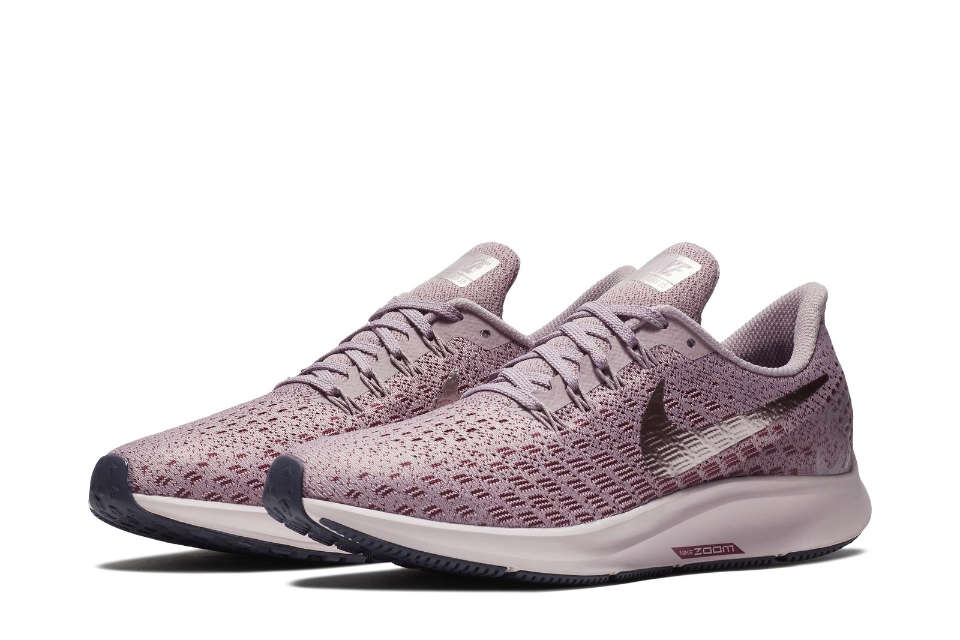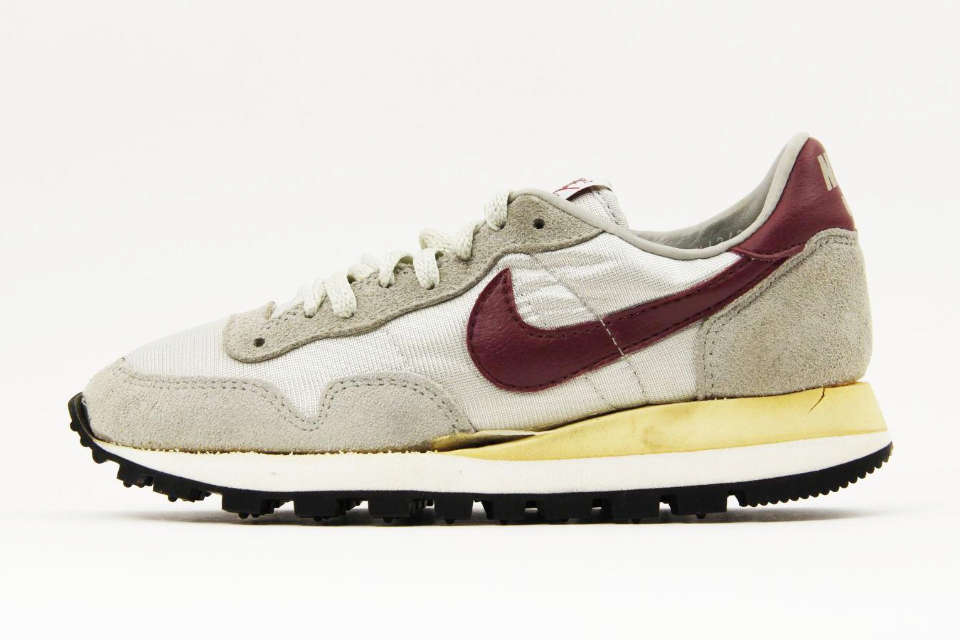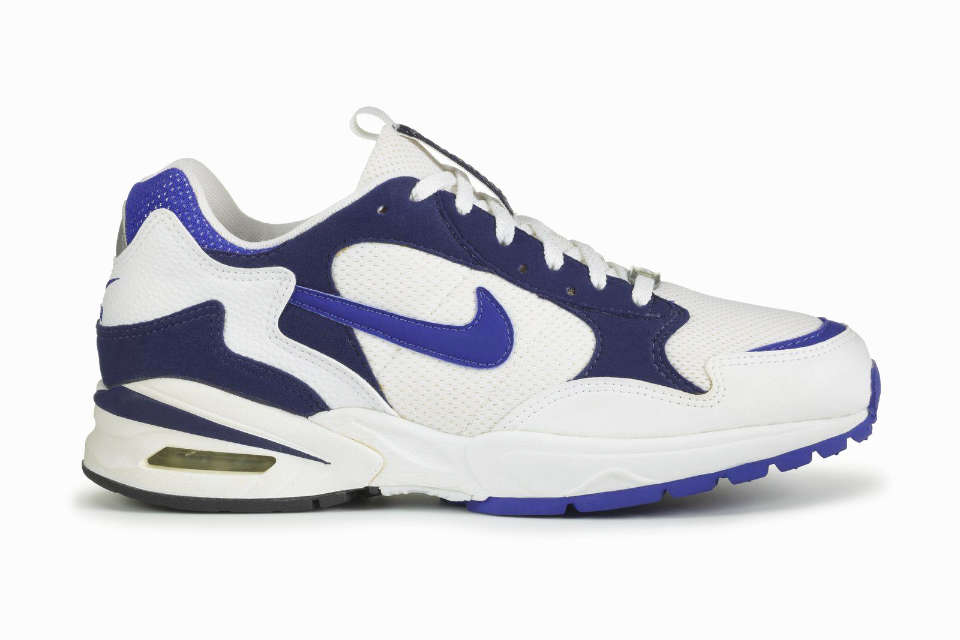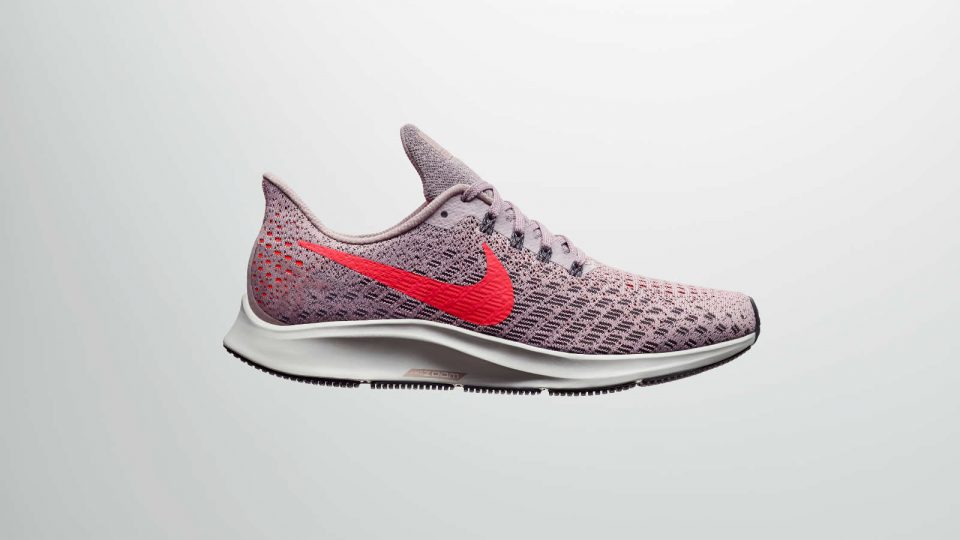In its 35 years of life, the Nike Air Zoom Pegasus has gone through major technology shifts, supported training efforts of numerous everyday runners and some of the world’s best distance runners. When its time for the shoe to be updated, designers hear feedback from the elite athletes (including one of the silhouette biggest fans, champion British distance runner Mo Farah). It was especially clear that some performance elements were not to be tinkered with, and some areas could do some updating.

What is new
- The tongue is notched for easier on/off.
- The beveled heel helps with the touchdown.
- Designers moved the bottom eyelet to open up and provide flex in the foot.
- The collar is directed away from the Achilles for added comfort, a design shift that came from Farah’s insights.
- Nike Zoom airbag was inspired by the Nike Zoom Vaporfly 4%. The designers combined the two airbags that previously used in Pegasus into one that mimics the shape of the 4% curved carbon-fiber plate. The new shape offers a responsive cushioning that improves transition and flexibility.
- The women’s silhouette has a slightly softer Cushlon foam that was specifically made for the female foot.
What hasn’t changed
- The mesh cut and sew upper still remains.
- The midsole is still a mix of Nike Zoom Air and Cushlon foam.

Things you didn’t know about Pegasus
- Nike Pegasus is Nike’s all-time best-selling running shoe.
- Mark Parker, NIKE, Inc. Chairman, President and CEO, was part of the team credited with making the first Pegasus. At that point of time, he was the manager of advanced product designs and the director of design concepts and engineering.
- The Pegasus was the first shoe to feature an Air Wedge, a heel-only Air unit that, according to an October 1982 Nike catalog, “improves shock absorption by 12 percent over an EVA wedge”. In fact, that is why the shoe was formerly called the Air Wedge Trainer.
- A children’s model became part of the line-up in 1987.
- In 1996, Visible Air was introduced to the shoe.
- Phil Knight, NIKE, Inc. founder, may be wearing a Pegasus right now. He’s been spotted wearing Pegasus at black-tie events, public speaking appearances and between meetings at Nike’s World Campus in Beaverton, Oregon.
- The franchise was temporarily dropped from the line in 1997. In 1998, it was renamed the Arma, and the technology remained in the line. In 2000, it made its official return to the line as Air Pegasus 2000, which was designed by Sean McDowell, Air Max Plus designer, as part of the newly created Bowerman Series.
- For the first time in Pegasus history, in 2004, the women’s version was adapted specifically for the anatomy of the female foot. The women’s saddle was made more “curvaceous,” and the medial support was increased. In 2006, it became completely gender specific and in 2018, it offers responsive Cushlon foam that was specifically tuned for women for the first time.
- It’s the first non-basketball shoe to feature Nike FlyEase.
- The 2018 Pegasus was inspired by Zoom Vaporfly 4%, and for the first time it offers a full-length articulated Zoom Airbag.

The Nike Air Zoom Pegasus 35 will be available in Singapore in Taupe from 1 June 2018 onwards on nike.com and at selected retailers for RRP S$199.





